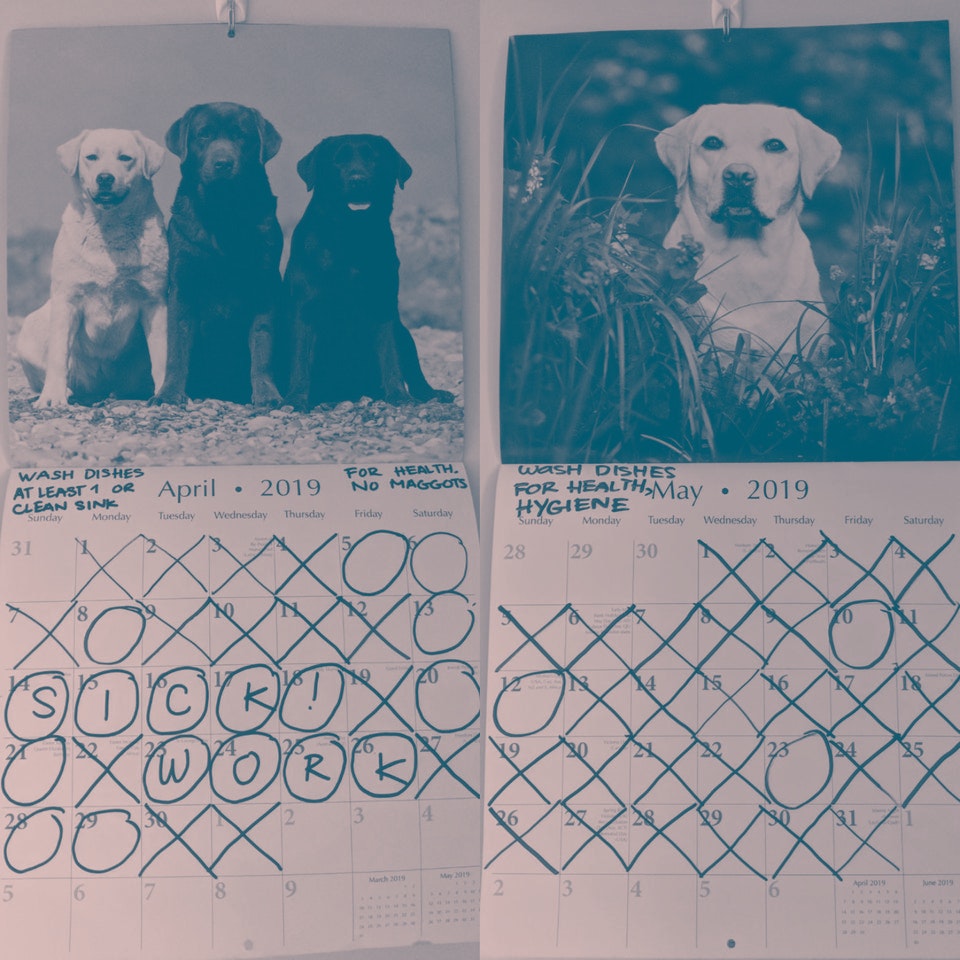but this place is just right.
I know my plants move — not only with the wind that blows from my air conditioner, but on their own. One of them, a striped calathea with broad green leaves, moves dramatically throughout the day. It stretches deeply toward the sun, spreading out as if it were sunbathing. As the sun sets and it’s had its fill of light, my calathea folds itself up as if it were hands in prayer. Shades of green are replaced to show off its deep, purple underside. These movements are why some call it the prayer plant.
My plants don’t move as if they were characters in Toy Story, living full lives but only in the moments when I’m out of the room and not looking. Still, I like to picture them hastily adjusting their leaves — sometimes complaining to themselves that I’m always here — when I step out. But that’s not reality. My plants are moving, just so slowly that I don’t notice it. (And, of course, this movement is on top of each day’s growth, as new leaves emerge and unfurl from the ground.)
But on the internet, I’m actually able to watch plants move. There are two places I check in most often: Nicole He’s Grow Slow Twitter account and Darryl Cheng’s House Plant Journal page on Instagram. To a plant outsider, their feeds may look similar: lots of pictures of greenery. But each rests on a different premise. On Grow Slow, He posts a still image of her fiddle-leaf fig, from the same angle, at 10:17 a.m. each day. (The angles change periodically, but the point is that things are the same day-to-day.) Photo to photo, the fiddle-leaf fig remains the same, save for He’s hand or foot here or there — on July 20, she surprised followers with a peace sign, a reminder that a human is indeed involved in this process. The Grow Slow Twitter account rewards the patient follower, those of us who know that the mundane each day will add up to something magical.
Cheng’s House Plant Journal is a testament to his own patience, but not our own. On House Plant Journal, Cheng posts time lapse videos of his plants growing fast. A monstera deliciosa’s leaf’s two-week unfurling goes by in the span of a few seconds. A week’s worth of basil grows in under a minute. A prayer plant like my own will dance under a day’s worth of sunlight.
When it comes to plants, there’s something magical about the time lapse format. Movement is both natural and unnatural. It can’t be real, but at the same time, of course it is. This is particularly true when it comes to a plant like the oxalis triangularis, a delicate, plum-colored plant that’s colloquially called the false shamrock. In Cheng’s video, the plant’s clover-like leaves flutter like butterflies toward the sun, moving as daylight does. At sunset, the wings fold into arrow
heads to rest for the night. The video spans 18 hours but only takes a few seconds to play. I like to watch this video on loop, replaying the false shamrock’s days, weeks, and years. New wings will sprout from the ground and continue to open and close.
He’s project, Grow Slow, sometimes indulges in the rare time lapse video of its own. On May 21, for the account’s third anniversary, He posted a video which illustrated the dramatic change obscured by the format of her slow internet project. It was a compilation of three years’ worth of growth and movement, totaling more than 1,000 photos since its start. And it all happens in just over one minute.
Three years ago exactly, I started a slow internet project - mundane every day, but interesting over the course of time. @grow_slow has now tweeted a pic of itself over 1000 times. 🥳
— Nicole He (@nicolehe) May 21, 2019
🌱 Here’s a birthday time lapse of every photo of @grow_slow so far: pic.twitter.com/5jabBfToOq
I like these videos because they force me to think about my own plants in different ways. I know they grow and move and change, but it happens so slowly that I can barely notice it. It’s like when my two-year-old basset hound mix, Major, was growing into his full size. I saw him every day, from 14 lbs to 50. Each fraction of a pound he gained from day to day was hardly worth recognizing on its own, but those numbers added up over months worth of time. Once he was small, but now he’s big.
Last week, I precariously balanced my webcam on the shelf where all my plants live. Using a program I discovered online, I instructed the camera to take a photo every 20 seconds for two hours — the longest interval with the free version of the program. I left the computer alone and climbed into bed for a nap, because I couldn’t imagine another way to keep myself from peeking at the progress or poking and prodding at my plants and camera. I returned to my computer two hours later, groggy from sleep, to find a soundless video that had compiled each of those images into two five-second clips. And my plants moved, just like Cheng’s. The green leaves of my calathea turned up into prayer to show off their purple bellies.
look, my plants move!!!!!!!!!! pic.twitter.com/0nSLfWprHU
— Nicole Carpenter (@sweetpotatoes) July 26, 2019
It shouldn’t have been surprising to me that my plants, too, moved. I know this is a thing, and it has a name: nyctinasty, or the “circadian rhythmic nastic movement” of certain plants. (Two hours is much too short a time to see any meaningful growth in these plants, but I am able to see the plant’s nastic movement.) I’ve watched my videos, back to back, on repeat, as if I’m checking to make sure they’re real. It’s so satisfying to see the ways my own plants grow; I live with them every day, water them as needed, and sometimes struggle to understand what they want. But when I watch the clips, all 10 seconds of them, it feels wonderful, like I’m peeking in on something I shouldn’t be able to see.










